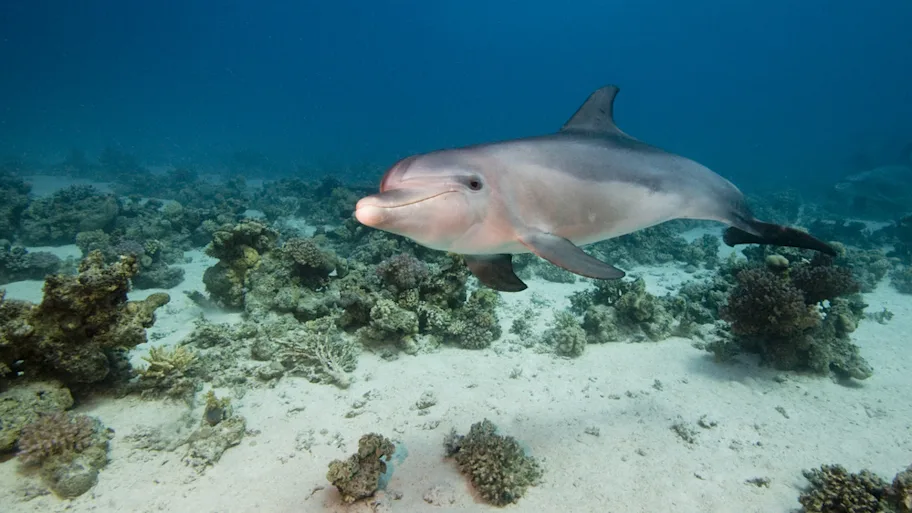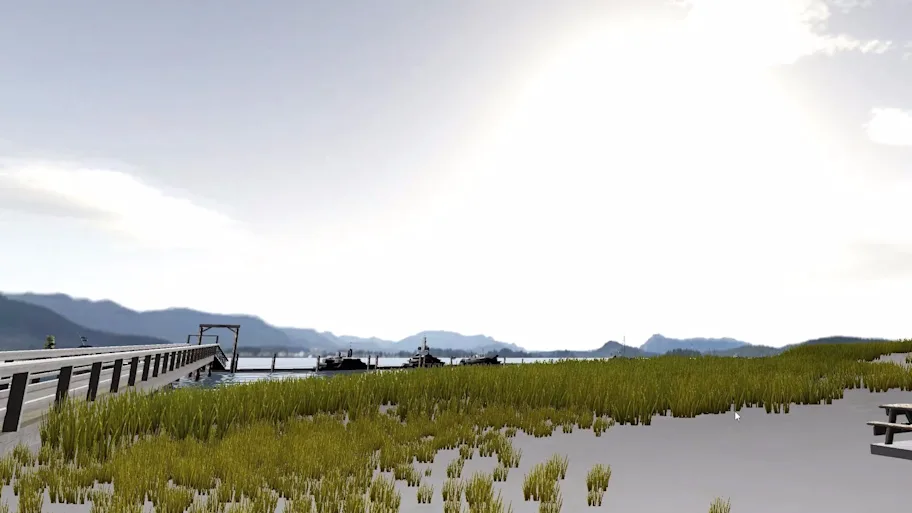
- Science news
- Featured news
- Dolphins adapt to survive invasive coastal constructions
Dolphins adapt to survive invasive coastal constructions
Marine ecosystems are endangered by an increasing number of coastal development projects. A new study shows for the first time that bottlenose dolphins may adapt to anthropogenic disturbance under some circumstances. The findings draw attention to the need for proper management of coastal construction sites.
By Suzanna Burgelman, Frontiers Science writer

Social interaction between two bottlenose dolphins. Image: Ann Waver
Bottlenose dolphins learn to cope with coastal construction activities. That is the conclusion of a study published in Frontiers in Marine Science. The study is the first to provide a longitudinal perspective on the cumulative impacts of coastal construction. Dolphins adapted to the construction of a bridge by establishing feeding locations outside of the construction zone, and by shifting the timings of behaviors to a time in the day when construction activities were minimized.
Coastal development practices negatively impact marine wildlife
Marine coastal development is characterized by unsustainable practices. Coastal development exposes 47% of coastal marine mammal species and 51% of core marine mammal habitats to extensive anthropogenic disturbance. Human activities along coastlines and in marine habitats can lead to pollution, vessel strikes, entanglement, by-catch, and debris ingestion, which disturb and harm marine wildlife.
Download original article (pdf)
Two of the most damaging human practices are dredging and pile driving. Dredging, the removal of sediment and debris from bodies of water, is lethal to fish eggs and larvae. Pile driving causes severe noise pollution, which interferes with the behaviors of marine wildlife. Many fish species and cetaceans depend on sound to navigate, search for prey, avoid predators, and communicate with conspecifics.
These practices and their effects lead to stress, fatal stranding, and acute avoidance in cetaceans. Due to unprecedented levels of construction, coastal zones are becoming the noisiest and most endangered ecosystems on the planet. Plus, as these activities never happen individually, they can have cumulative effects.
The effect of coastal development on bottlenose dolphins
Bottlenose dolphins are strongly tied to their coastal habitats and are more vulnerable to human pressures, as it exposes them to the greatest number of cumulative effects. Dr Ann Weaver, John’s Pass Dolphin Study/Jaasas Academic Press, Florida, researched how bottlenose dolphins were impacted by a bridge replacement project in John’s Pass, St Petersburg in west central Florida. John’s Pass is a narrow tidal inlet connecting the Gulf of Mexico and the Intracoastal Waterway, and served as prime bottlenose dolphin habitat because it provided rich feeding grounds. The bridge replacement project occurred in 2 phases over a 5-year period.
Weaver collected observational data several times weekly for 11 years to obtain before, during, and after construction data. Measurements of ‘total numbers of dolphins’, ‘dolphin presence versus absence’, and ‘number of dolphins engaged in predetermined behavior states’ before construction were compared to the same measurements during and after construction.
The construction project included pile driving and dredging and brought about light and noise pollution. The study showed two ways in which dolphins appeared to adapt to these human activities. First, the dolphins stopped using John’s Pass as a feeding ground, instead shifting to areas outside of the construction zone. This adaptation also led to a decrease in social interactions between dolphins in the construction zone. These behavioral changes remained across the 5 years after construction was finalized, and never recovered.
Second, during the first phase of construction, the dolphins shifted the timings of behaviors to a time in the day when construction minimized. By the second phase of construction, the dolphins appeared to have learned to cope with human disturbance, as their behavior in areas being developed showed some change back to pre-construction habits. Weaver adds, “Adaptation may also have been related in part to the way construction was managed. This two-phase exposure to construction may have allowed the dolphins to become familiar with construction in the first phase and perhaps enabled them to adapt a “new normal” during the second phase.”
Weaver concludes: “These results provide a two-sided key to managing future coastal construction projects by mandating the following conservation policies. First, study the wildlife before construction begins to learn their habits. Second, apply that knowledge: Plan coastal construction activities accordingly to give them a chance to adapt and help the dolphins maintain their historic habits as much as possible.”

Demolition of submerged cement blocks. Image: Ann Weaver

Bottlenose dolphin with debris stuck on fin. Image: Ann Weaver






